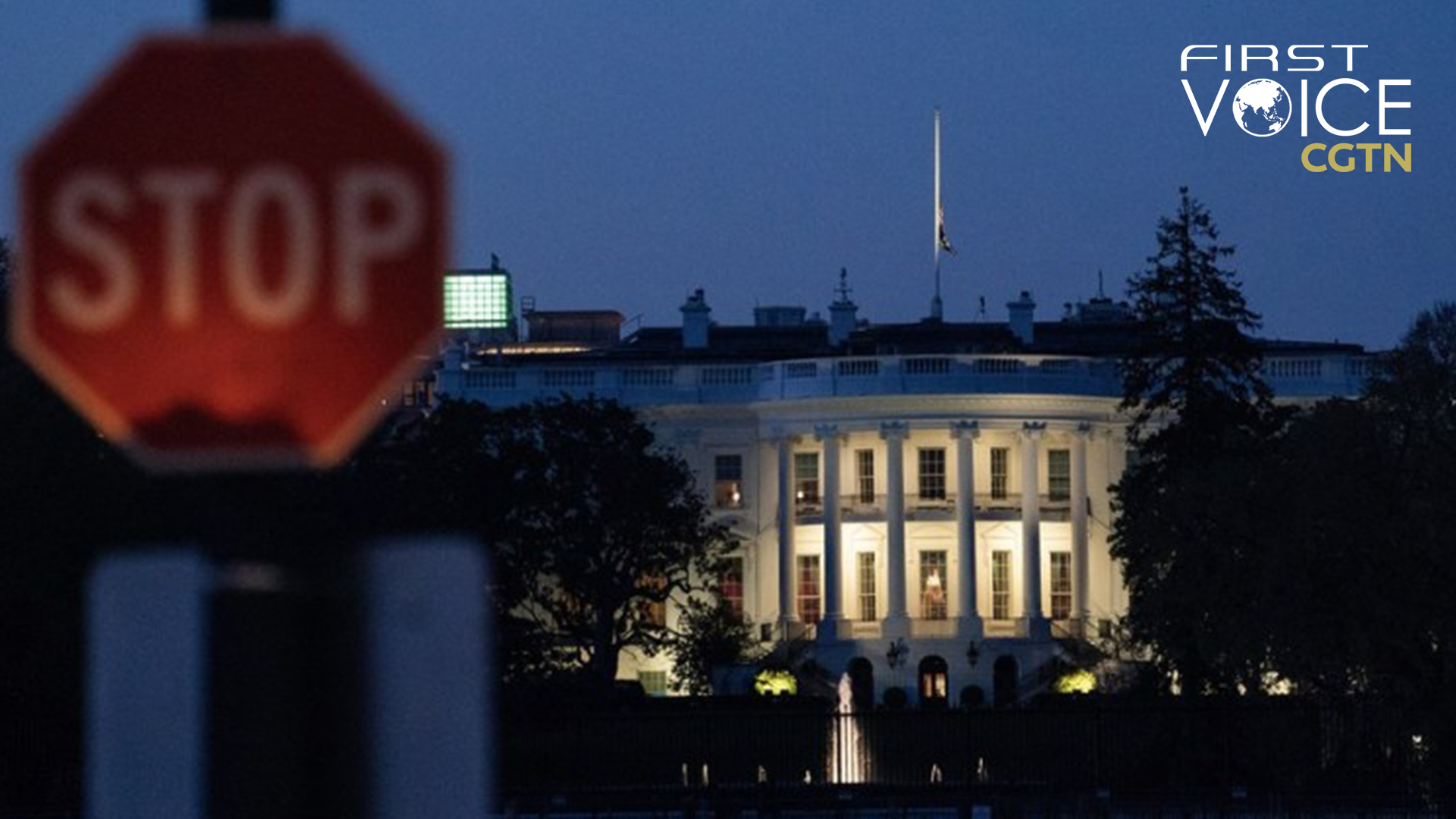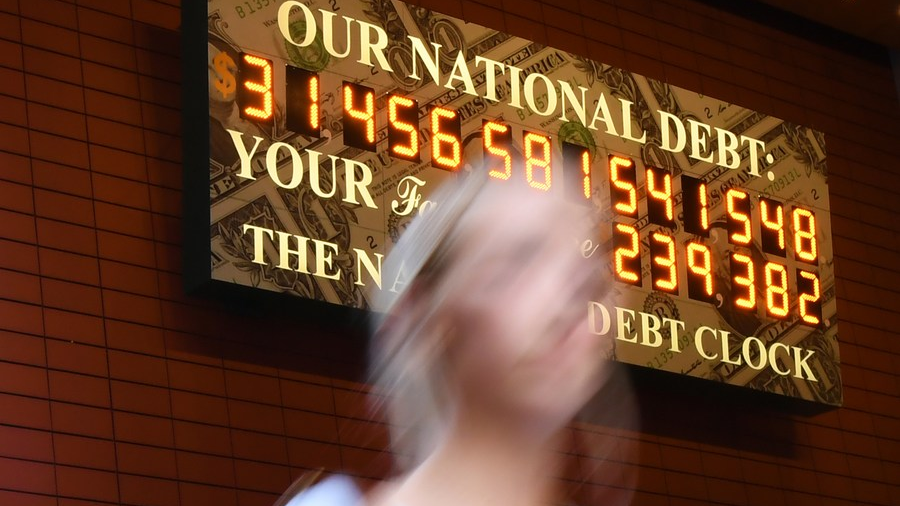
Editor's note: CGTN's First Voice provides instant commentary on breaking stories. The column clarifies emerging issues and better defines the news agenda, offering a Chinese perspective on the latest global events. This First Voice article is written by CGTN Special Commentator William Jones, a former White House correspondent for Executive Intelligence Review. The article reflects the author's opinions, and not necessarily those of CGTN.
In all this happy talk in the U.S. media about how the battered U.S. economy will somehow have a "soft landing" this year, the sudden downgrading of U.S. debt by the prestigious Fitch Ratings agency from AAA to AA+ was a wake-up call. But it shouldn't have come as a surprise. Some people claim that it was simply due to our divided government's inability to raise the debt ceiling. While this might have played a role in it, the fundamental problem is the ballooning of the U.S. debt.
When an individual oversteps his credit card limit, he has to perform something of a "debt reorganization" in order to continue using it. Governments also generally face a similar type of problem. Not the United States. Given the role of the U.S. dollar as an accepted "reserve currency," it can – and does – simply print up more dollars. But in a functioning economy, the currency, and the credit mechanism associated with that currency, must maintain a relationship to developments in the physical economy.
The U.S. dollar, however, had long ago lost any real connection to the physical economy of the United States. Already in the 1990s, economist Lyndon LaRouche, who had predicted the 1987 financial crisis issued his famous "Triple Curve" showing three curves; one representing the expansion of the real economy, which was pointing downward, the second showing the growth of debt, which was increasing, and the third, showing the payment incurred on that debt which was increasing exponentially. The growing gap between these curves could only lead to a financial blowout, LaRouche said, which occurred in 2008.
The 2008 crisis was also a wake-up call for policymakers, with former Fed Chairman Ben Bernanke, who had conducted the biggest bail-out of Wall Street ever during the 2008 crisis, simply noting "that the United States has a very serious long-term fiscal problem." But little was done to resolve that problem and the debt increased at an increasing rate, with a near exponential rise in debt payments, as the "Triple Curve" predicted. In 2011, Standard & Poor's dropped its top AAA rating on U.S. debt, while Moody's and Fitch did not. At that time, the ratio of U.S. debt to GDP was 65.5 percent If present trends continue, that figure is expected to rise to 115 percent by 2033.

A woman walks past the National Debt Clock in New York, the United States, June 1, 2023. /Xinhua
A woman walks past the National Debt Clock in New York, the United States, June 1, 2023. /Xinhua
The overall consequences of the Fitch decision are difficult to predict, but it is clear that the country has come to a branching point where it can no longer ignore the problem. The U.S. has clearly been living beyond its means. Its self-styled role as the "world policeman" has helped bankrupt the economy. The billions of dollars spent on NATO'S Ukraine conflict and the U.S. defense budget generally are sucking away the much-needed funding for social needs and infrastructure. But it will be difficult for Congress to wean itself away from defense spending since some of the money from defense firms flows back to representatives in support of their election campaigns. If Republicans move forward on attempting to limit spending, they will first and foremost go after grandma's medicare check rather than limit the funds going to McDonnell Douglas and Lockheed in buying military hardware. The social unrest that might trigger could lead to serious problems for U.S. society generally.
There are solutions, which politicians are not prepared to deal with. There could be a Chapter Nine reorganization of the U.S. debt structure and a return to the Glass-Steagall legislation of the 1930s which separated banks from the more speculative investment markets. Politicians could also return to the traditional Hamiltonian policies that built the United States, making finance again a "handmaiden" of the physical economy, with low-interest rates for investment in the physical economy and high rates for investment in the "casino economy."
While such reforms seem unlikely in the present climate, the world community is reacting in its own way, by gradually abandoning the dollar as the medium for international transactions. The power of the United States to dictate policy is not simply due to its political and military might. The "almighty dollar" has enabled the U.S. to use economic means like unilateral sanctions to force countries to do their bidding or to make them suffer when they don't. This move toward de-dollarization could also be a wake-up call for Washington. More importantly, it poses the real question of the need for fundamental reform of the international financial system and the creation of a new financial architecture, one which is beneficial to people all over the world and not to the few who control the purse strings.
(If you want to contribute and have specific expertise, please contact us at opinions@cgtn.com. Follow @thouse_opinions on Twitter to discover the latest commentaries in the CGTN Opinion Section.)